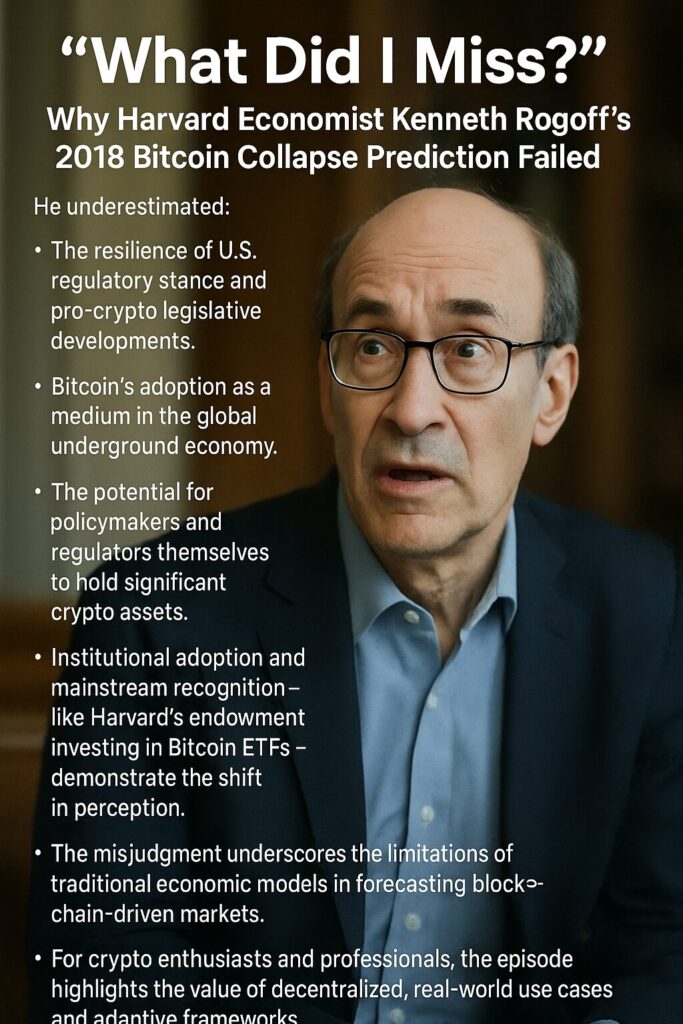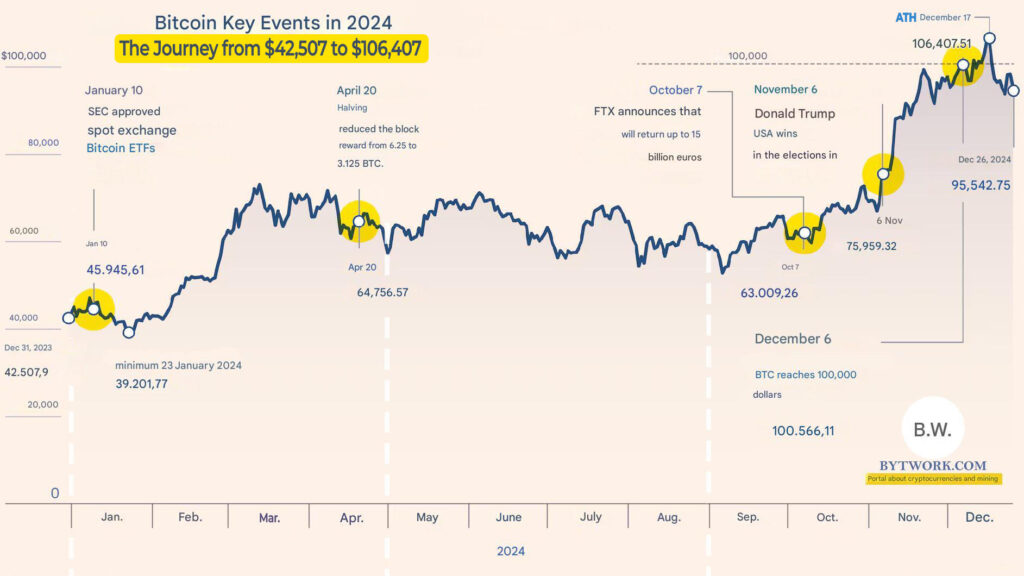
Main Points :
- Rogoff’s 2018 prediction that Bitcoin would fall to $100 rather than reach $100,000 was dramatically wrong.
- He underestimated:
- The resilience of U.S. regulatory stance and pro-crypto legislative developments.
- Bitcoin’s adoption as a medium in the global underground economy.
- The potential for policymakers and regulators themselves to hold significant crypto assets.
- Institutional adoption and mainstream recognition—like Harvard’s endowment investing in Bitcoin ETFs—demonstrate the shift in perception.
- The misjudgment underscores the limitations of traditional economic models in forecasting blockchain-driven markets.
- For crypto enthusiasts and professionals, the episode highlights the value of decentralized, real-world use cases and adaptive frameworks.
1. Prediction vs Reality: The 2018 Bitcoin Crash Forecast

Nearly seven years ago, Harvard economist Kenneth Rogoff declared on CNBC (March 2018) that Bitcoin was “far more likely to be worth $100 than $100,000 over the next decade.” He based this on an expectation that government crackdowns—and Bitcoin’s limited real-world utility—would inevitably collapse its value.
Fast forward to December 2024: Bitcoin surged past $100,000, and in August 2025, even reached highs above $124,000. Rogoff, reflecting on his misfire via an X post, asked bluntly: “What did I miss?”.
2. Three Miscalculations: Regulation, Underground Economy, and Conflicted Policymakers
2.1 Overestimating Regulatory Crackdown
Rogoff expected decisive U.S. regulation to stifle Bitcoin’s growth. Instead, policymakers passed notable pro-crypto legislation—such as the GENIUS Act (stablecoin framework), the CLARITY Act (transferring oversight to the CFTC), and others—while taking a more open stance. His “far too optimistic” hope that regulation would prevail was misplaced.
2.2 Underestimating Bitcoin’s Role in the Underground Economy
Rogoff failed to anticipate how Bitcoin could become a transactional medium preferred in the ~$20 trillion global underground economy. He didn’t appreciate how, even with illicit activities forming a small fraction of total laundering, Bitcoin’s convenience and circumvention of traditional fiat systems would establish steady demand.
2.3 Failing to Predict Policymakers Holding Crypto Themselves
Perhaps most surprising: Rogoff did not foresee regulators—or even the “regulator in chief”—publicly holding hundreds of millions or billions of dollars in crypto, despite apparent conflicts of interest.
3. Market Response and Crypto Industry Reaction
Crypto experts were quick to respond. Bitwise’s Matt Hougan said Rogoff “failed to imagine that a decentralized project, which drew power from people and not centralized institutions, could succeed at scale.” Anthony Pompliano criticized him for “blaming everyone but himself.” Others, such as Saifedean Ammous, similarly pointed out how Rogoff’s worldview overlooked Bitcoin’s unique strengths.
Irony abounds: Harvard Management Company—the institution tied to Rogoff—invested some $116 million into BlackRock’s spot Bitcoin ETF, placing Bitcoin near its endowment’s top holdings.
4. Broader Implications: What This Means for Crypto Seekers & Practitioners
For those exploring new crypto assets, seeking revenue from blockchain, or applying blockchain pragmatically in business, this episode offers critical lessons:
- Decentralized demand matters. Bitcoin’s success hinged not on central approval, but on grassroots adoption and economic utility.
- Models must evolve. Traditional fiat-centric frameworks fail to capture the dynamics of blockchain ecosystems; adaptive, data-driven models are key.
- Real-world anchors are powerful. Use cases like remittance, inflation hedging, or unbanked transactions give crypto tangible value beyond speculation.
Conclusion
Kenneth Rogoff’s 2018 forecast that Bitcoin was more likely to collapse to $100 than rise to six figures stands as a cautionary tale in economic modeling—one where decentralized demand, underground utility, and unexpected political developments combined to render traditional frameworks obsolete. For those exploring new cryptos, designing blockchain-based revenue models, or applying distributed ledger practically, the lesson is clear: recognize value where it emerges in the real world. Whether that’s serving unbanked populations, hedging against fiat instability, or facilitating peer-to-peer value exchange—blockchain’s power lies not in centralized validation, but in distributed participation and adaptive use.

